© 2012 Paul Stokes
All images on this site are protected under copyright law. You may view or print them for your personal study but they may not be reproduced in any other form or location electronically or in print.
The Friends Of Drakelow Tunnels
(Now closed)
Here are some of the exhibits we collected over
the years.
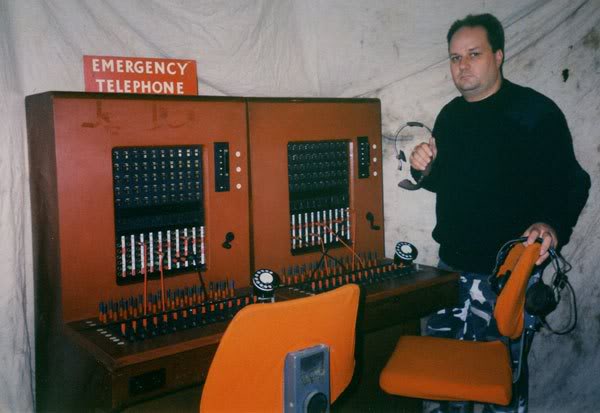 |
In March
1999 I travelled to Nottigham to rescue this Home Office Emergency
Manual Switch from an exchange known as 'Archer'. The exchange was
being decommisioned and was about to be converted into student accommodation.
Whilst clearing the site the BT engineers found a locked room in
a semi-basement. When they got the door open they found this along
with its power supply and battery backup unit. From around the 1950's
to mid 1970's it had been part of the Home Office's emergency back
up telephone network. Staff would have had to man this to manually
switch government telephone comms between bunkers and the main trunk
system. In the 1970's it was superceeded by more modern compact
equipment and as space was not a problem, it was simply disconnected
and left in its room, left undisturbed for over 20 years. It was
destined for the skip, so we rescued it for Drakelow. It was kept
in the Main Distribution Frame room off Tunnel 4 (Shown as 'J' in
the 1960's plan on pages 20-21 in Drakelow Unearthed)
Not on view on the main tour route but occasionally shown to parties.
Drakelow's damp atmosphere was not kind to it and it required regular
care. It was left in place when we finished the tours, so I don't
know its current condition. (The chairs came from Birmingham's secret Anchor exchange) |
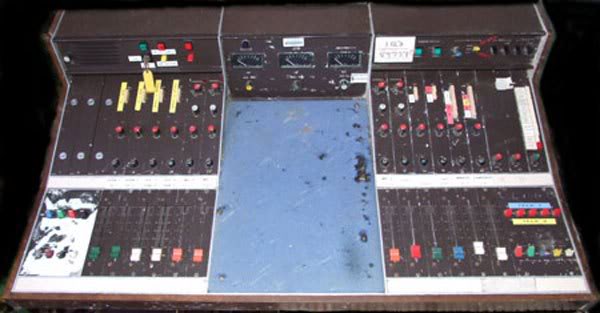 |
Audix
MXT1000. Former BBC mixing desk. In 2004 Michael Collie from BBC Midlands Today visited us to do a piece for the program about our tours. When he saw our empty BBC studio he offered to see if he could find us anything from the surplus items being cleared out from Pebble Mill, as the BBC were moving out. A few weeks later a call from the BBC meant a dash to Birmingham to collect this mixing desk. The engineer who met me told me that it was actually one that had been used at Drakelow. Michael Collie doubted this and another bunker enthusiast has since told me that it is not the correct type for a RGHQ studio, so I guess we'll never know for sure. It has now been passed on to a collector in Norfolk. |
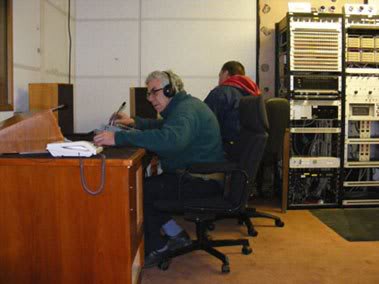 |
|
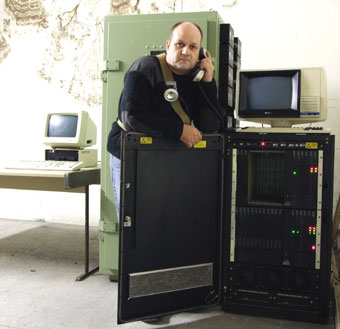 |
In March 2007 we collected this County Message Switch from Shropshire County Council's bunker in Shrewsbury. We displayed it outside the BBC studio at Drakelow. More info here. You can see it when it was live and in use in the County Council's bunker in the Drakelow Unearthed extras pages Here. |
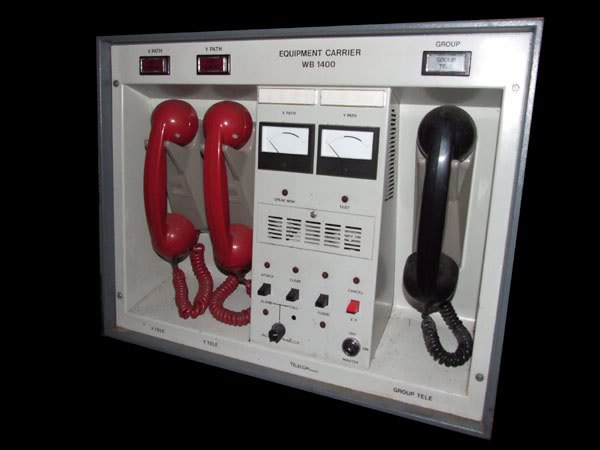 |
WB1400
Carrier Control Point. Information on an impending air attack on the U.K. would be collated from a number of sources including NORAD (deep inside Chyanne mountain in the USA), BMEWS at Fylingdales in Yorkshire and NATO’s European Air Defence Ground Environment System (NADGE). If the home office staff analysing the data at the U.K. Regional Air Operations Centre (UKRAOC) felt that there was an imminent threat they could, by turning a key in a master control box, simultaneously alert 250 of these Carrier Control Points located at major police stations across the U.K. |
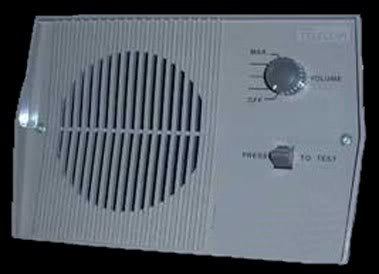 |
In addition
to the air raid warning sirens the carrier control points were also
linked to these WB1400 repeater units. There was one in the BBC
studio at Drakelow. They were located accross the country in Police
Stations, Fire Stations, Post Offices and in some cases even in
pubs! The one we displayed was donated by Scott Innes and was set up to play the warning sounds. |
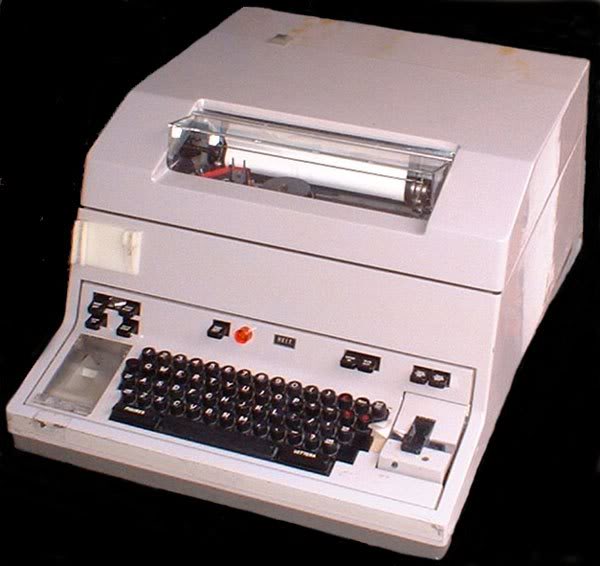 |
Creed
15B Teleprinter. At one time the mainstay of Military and Government communication. Drakelow's communication centres would have included many of these. |
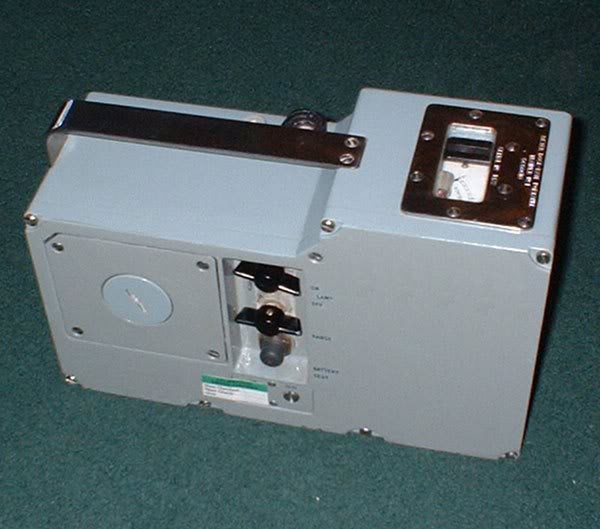 |
Portable
Dose Rate Meter (Trainer No 1) This device is almost identical to
the standard meter, but was intended for training purposes.It is
around 10,000 times more sensitive than the standard unit to allow
it to detect tiny radioactive sources on training exercises for
the armed forces, emergency services and civil defence staff. It
was in use from the early 1950’s until the 1980’s. This example
is believed to be in full working order but requires 4No 30V batteries
which are now obsolete and therefore very hard to come by. I purchased this example from Sheppards army surplus near Leominster. |
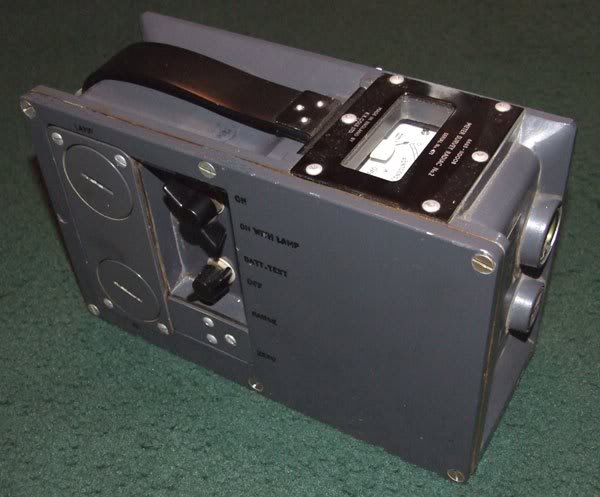 |
Meter
Survey Radiac No 2 This is the companion to the No 1 trainer and
was also in use from the 1950’s until the 1980’s. The Royal Observer
Corps initially used the Survey Meter No 2 as its prime radiation
detector until it was replaced by the specially designed Fixed Survey
Meter which used the same obsolete high voltage batteries. The ROC
retained the Meter Survey Radiac No 2 for use during external 'post
attack' mobile monitoring surveys.By removing the baseplate from
bottom the unit, this meter can be used to detect beta radiation. (Radiac is an acronym for “Radiation, Detection, Identification, And Computation”) Both of these meters were favoured as they had been tested on fallout in Australia after the operation Buffalo nuclear tests and were retained until 1982* by commissioning a manufacturer to regularly produce special production runs of the obsolete batteries. *In fact the maintenance sheet for the No1 trainer shows that it was last maintained in March 1987 |
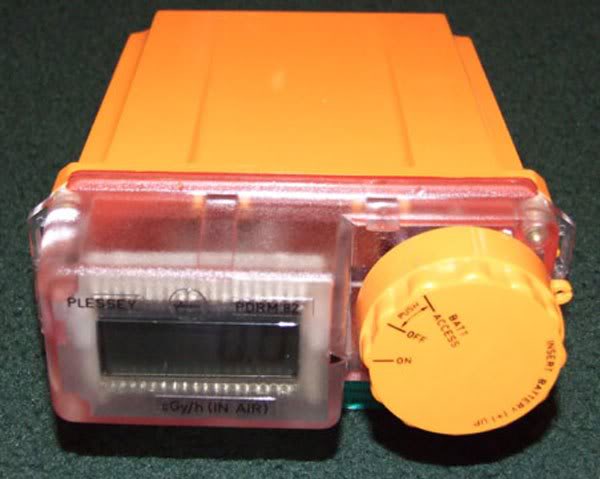 |
In 1982
the PDRM82 was issued for use by the Royal Observer Corps. It is
lightweight with an LCD display and a plastic case and has all the
electronics including minature geiger tube (shielded against beta
particles) on a single EMP hardened PCB. It was designed to use
3 standard 1.5 Volt cells and is microprocessor controlled. It was also available in a fixed version designated PDRM82(F). The fixed version had an external coaxial socket mounted on the rear, that accepted a cable from the above ground ionisation detector outside the ROC post. It could also be fed simulated readings for training purposes. This example is in full working order. |
Back to main Friends
of Drakelow Tunnels page
2003 Photos
2004
Photos
Goodbye
Adit D
2005 Photos
E.C.N. Equipment
![]() Drakelow
Drakelow
![]() RSG
9 (1960's - 1970's)
RSG
9 (1960's - 1970's) ![]() RGHQ
9.2
RGHQ
9.2
![]() Back
to home page
Back
to home page ![]() Drakelow
Unearthed
Drakelow
Unearthed ![]() R.O.C.
Posts
R.O.C.
Posts
© All photographs on this site are protected by copyright law.






